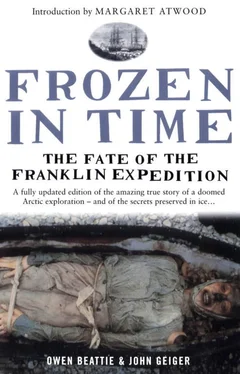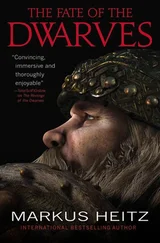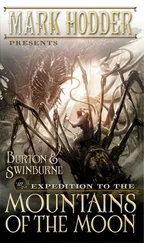In surveying the King William Island coastline the following year, Beattie, this time with field assistants Walt Kowal, a graduate student in anthropology at the University of Alberta, Arne Carlson, an archaeology and geography graduate from Simon Fraser University in British Columbia and Inuk student Arsien Tungilik, planned to retrace the searches of M’Clintock in 1859 and Schwatka in 1878–79.
Although both nineteenth-century searchers had discovered the skeletal remains of crewmen at a number of sites, the surveyors would concentrate on Schwatka’s published accounts, since the explorer had found and described more of these finds. Schwatka had also gathered up the scattered bones and buried them in common graves at the various sites, placing stone markers on them. Beattie hoped these graves could be located, and, with great anticipation, plotted their supposed position using Schwatka’s journals and maps. From the descriptions of bones buried at some of the sites, the number of crewmen represented could be four or more.
After a three-and-a-half-hour flight south from Resolute on 28 June 1982, the Twin Otter supplied by the Polar Continental Shelf Project swept over Seal Bay on the west coast of King William Island. Spotting a dry gravel ridge near the beach, the pilot circled back, flying close to the ground and as slow as aerodynamics would allow. The co-pilot opened a door and, with the help of Arne Carlson, booted a crate filled with supplies out of the plane. All watched as the box bounced a few times and rolled to a stop on the ridge, its pink-coloured cloth wrapping visible from miles away. The aircraft then headed south along the coast to Erebus Bay, where a similar procedure took place. (The run-off from melting snow on King William Island made landings too risky that season, and the staff at the Polar Shelf base in Resolute came up with the idea of the air drops.)
The scientific team then headed on to Gjoa Haven, where field assistant Arsien Tungilik was picked up. The Twin Otter soon flew back towards the northwest coast. After a time, the pilot suddenly banked the plane to the left—he had spotted a potentially good landing site in a land otherwise covered with summer run-off. Gesturing to Beattie, he pointed out of his window to the beach ridge and nodded his head. Looking at his map, then out the window, Beattie nodded back that the site, about 3 miles (5 km) north of Victory Point, would make a good starting point for the survey. After making one more low-level pass, the pilot put the plane down with feet to spare and, with one engine left running, the scientific crew jumped out of the plane’s side door and began unloading their supplies. Within five minutes everything was piled outside, and the pilot and his co-pilot pulled themselves back up into the plane. After restarting the second engine and throttling up, the plane edged forward. Seconds later it was airborne and heading north, then immediately it banked and flew past the group on the ground, the pilots waving as they set course for distant Gjoa Haven to refuel before their return to Resolute.
Although the team’s food caches had been dropped along their planned route, each person’s backpack was weighed down with food and supplies. Extra clothing for temperatures expected to hover around the freezing point, and other personal items, were usually stuffed to the bottom. Next came the food, consisting mainly of packaged freeze-dried goods and chocolate bars. Other important items such as matches, tent- and boot-repair kits, first-aid kits and ammunition were packed near the top. Sleeping bags were tied to the bottom of the packs, with a tent and sleeping pad strapped one to each side. The rifle and shotgun were attached to the top and could be reached easily while the pack was on. Other items that increased the weight of each load were the cooking utensils, stoves and fuel. A radio was carried, with which they would make twice-daily contact with the base camp at Resolute. Later, when leaving a cache site, their packs would be stuffed to overflowing with supplies and more things would be hanging from straps on the outside.
Each team member was burdened with one of these heavy packs (Beattie and Tungilik carried more than 60 pounds/30 kg; Carlson carried even more), but it was Kowal, a powerful man with seemingly endless energy, who served as the self-assigned workhorse for the survey party. During the first phase of the fieldwork, Beattie and Carlson had to lift Kowal’s pack up to help him get it on. In it, in addition to his own belongings, he carried food, the radio, a rifle, ammunition, a sleeping bag and pad, a tent, an inflatable raft, a set of oars, two camp stoves, his camera and, strapped to the back of the pack, a full 5-gallon (23-litre) container of stove fuel—for a total weight of more than 130 pounds (60 kg). Beattie was amused and amazed at the sight of Kowal as they moved along on their survey: a huge mountain of supplies appeared to be lumbering ahead on its own, powered by two legs that would disappear as Kowal squatted to investigate something on the ground. The mountain would then slowly rise and continue along on its course.
Loaded down as they were, each researcher had to move slowly to conserve energy. The survey needed alert minds and inquisitive eyes; fatigue would steal those necessary qualities away. They took frequent rests supplemented by liquids (tea, coffee, hot chocolate) between each camp. Even with these breaks, they were able to survey between 6 and 12 miles (10 and 20 km) each day, and when searching an area out of one of their established camps, they took only the necessary supplies for one day, greatly increasing their range and speed.
Their first day on the island, even before they had a chance to set up camp, a curious Arctic fox was noticed studying them from a nearby beach ridge. Beattie thought of the brief visit by the small animal, still covered in its heavy white winter fur, as a form of welcome to the strange and exotic island they were about to explore. Although Beattie had visited King William Island’s south coast the previous year, he was about to survey areas where people had not been for many years.
When the fox had scurried off into the distance, the four surveyors busied themselves setting up the tents of their first camp and preparing a meal of freeze-dried food. After settling in, despite being tired from the long plane journey, they then briefly explored the surrounding area. Walking inland soon brought them to a large lake, and they could see in every direction that the land was flat and virtually covered in a sheet of water.
The following morning, as they moved northward along the coast, the temperature gradually warmed to 41°F (5°C), the sun emerged and the wind shifted so that it was blowing off the island. The team stopped briefly to remove parkas, then continued in shirt sleeves for the remainder of the day. The warmth of the season resulted in great quantities of meltwater flowing towards the coast from inland lakes, which made surveying conditions very difficult and almost impossible along parts of the route. Each mile of coastline covered usually required two or more miles of walking. Although their plan was to survey completely up the coast to Cape Felix, on the northwestern tip of the island, it would be physically impossible on foot. So when they reached a swiftly flowing stream at Cape Maria Louisa, 12 miles (20 km) south of Cape Felix, they decided to turn south. After searching unsuccessfully for a Franklin campsite that had been discovered in the area by M’Clintock and Hobson in 1859, they then camped for the night, returning to near Victory Point the next day.
Breaking camp on the morning of 30 June, the four men carried their supplies southward to the bank of another swollen stream. The depth of the water and speed of the current were too great to consider wading across, and they had to skirt round the outflow by walking out onto the ice of Victoria Strait. They wrapped their supplies in a large orange tarpaulin, tying the corners together. Then, dragging this large bundle and burdened with their overstuffed backpacks, they picked their way over the broken piles of ice at the waterline and out onto the smoother ice further offshore.
Читать дальше










